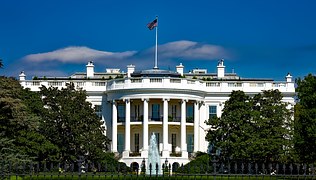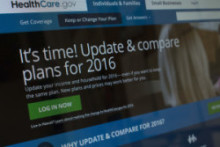The four insurers offering coverage in Georgia’s insurance exchange next year are increasing their proposed rates beyond the big premium hikes that they first sought, state officials said Tuesday.

The ever-increasing premiums proposed by insurers reflect the instability surrounding the insurance exchanges, which provide health plans for individuals and families who don’t have job-based or government coverage. The exchanges in the individual states were created under the Affordable Care Act, often called Obamacare.
Almost 500,000 Georgians signed up for coverage this year in the state’s exchange.
Glenn Allen, a spokesman for Georgia’s department of insurance, said Tuesday that the four insurers had upped their proposed increases, and still have until Sept. 27 to make more changes. He did not provide specific information on the new requests. “While outside actuaries are still reviewing the rates, it appears that in Obamacare’s fifth year, Georgians will experience another double-digit premium increase,” Allen said.
The uncertainty on exchange coverage has centered on actions by the Trump administration, which opposes the ACA and has sought its repeal. While the repeal efforts have been unsuccessful, President Trump has cut back federal support of the exchanges and other aspects of the health law.

The White House has declined to commit to funding the subsidies that insurers have received to lower out-of-pocket costs for consumers on the exchanges. The Trump administration also is slashing spending on advertising and promotion for exchange enrollment.
And the administration has signaled it may not enforce the tax penalty for individuals who fail to obtain health coverage, which would effectively negate the ACA mandate to have insurance. The mandate was created to keep young, healthy people from skipping coverage and leaving insurers stuck with more risky customers.
Watching what the feds will do
Georgia Health News reported in July that each of the four exchange insurers in Georgia, in their initial filings with the state, were seeking double-digit percentage rate hikes.

Blue Cross and Blue Shield of Georgia filed an original proposal for an average premium increase of 40 percent for individual coverage.
Ambetter of Peach State sought an average 12.4 percent increase, with a customer base in metro Atlanta and other regions of the state, including the Savannah area.
Alliant asked for a premium hike of 18.6 percent. It serves consumers in the northern counties of Georgia. Kaiser Foundation Health Plan of Georgia, focusing on the metro Atlanta area, sought a 25 percent average hike.
Since that filing, Blue Cross has pulled back from coverage in metro Atlanta and all other areas of Georgia where another insurer is offering an exchange plan.
Blue Cross, in an agreement with state Insurance Commissioner Ralph Hudgens, said it would offer coverage in the state insurance exchange in the 85 counties that will have no other health plans in 2018.

The current premium proposals still must be approved by Hudgens as well as federal officials. And the rates can be altered up till the time of approval.
The Wall Street Journal reported Tuesday that many state insurance regulators are struggling to make decisions over exchange pricing, amid the uncertainty over the government’s policy toward the coverage.
“There’s no clarity on what’s going to happen with the subsidies,’’ Bill Custer, a health insurance expert at Georgia State University, said Tuesday.
In addition, the cut in advertising and enrollment funding would affect healthier people more, Custer said, because that’s the population most likely to be reached through those efforts. Consumers who are unhealthy would already be motivated to seek out coverage, Custer said.
Roughly 85 percent of individuals in Georgia’s health insurance exchange receive subsidies from the government that bring down their premium rates. Custer and others point out that as premiums rise, those subsidies increase as well, cushioning the blow of higher rates.
The people most affected by big premium increases are individuals and families who, because of their income, don’t qualify for the subsidies.
Meanwhile on Capitol Hill, the chairman of the Senate health committee is aiming to pass a bipartisan ACA repair bill to try to stabilize health insurance markets.

Lamar Alexander (R-Tenn.) envisions a narrow bill that wouldn’t fix everything but would provide some assurances for insurers selling coverage next year, Politico reported. It would provide one year of funding for Obamacare subsidies that lower out-of-pocket and give states more flexibility to meet key requirements of the health care law.
A group of eight governors, led by John Kasich of Ohio, a Republican, and John Hickenlooper of Colorado, a Democrat, has suggested a package of quick fixes, including federal funds for reinsurance programs.
Minnesota’s reinsurance program has helped hold down premium increases there, state officials say. Under the measure adopted this year in Minnesota, the state reinsurance program pays 80 percent of the amount of a claim from $50,000 to $250,000. The insurer is responsible for any amounts over $250,000, the New York Times reported.
These stabilization efforts “are probably the best chance to come up with a short-term solution to stabilize the market,’’ Custer said.
Blue Cross, in its original rate filings, cited the uncertainty about whether the government will pay subsidies as a potential factor in adjusting its proposed premiums.
A lack of subsidy funding, the company said, “introduces a level of volatility which compromises the ability to set rates responsibly.”
